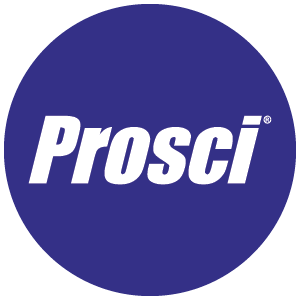Change Management Plan: Creating a Change Management Project Charter

5 Mins
Published: June 5, 2025

Clarity and alignment are critical to any successful organizational change initiative. That’s where a change management charter comes in.
A change management project charter is a vital template that lays the groundwork for successful change initiatives by clarifying project objectives, defining scope, and establishing roles and responsibilities. It is essential to align leaders and stakeholders and guide the overall change management process and planning.
This article explains how to create a practical change management charter template to start your change initiative on the right note.
What is a Change Management Charter?
A change management charter is one of the earliest documents created when planning a change initiative. By outlining the goals, scope, and responsibilities of each role, the change management charter promotes:
- Alignment – Ensures all stakeholders have a shared understanding of the change initiative, its goals, and their roles, promoting alignment across the organization.
- Guidance – Serves as a reference point for the change management lead and team, providing a structured approach to managing the change journey.
- Accountability – Clearly defines roles and responsibilities, helping to ensure that everyone is engaged and committed to the success of the change.
- Communication – Outlines how information will be shared, which is crucial for managing expectations and addressing concerns.
- Foundation for Planning – Provides a solid foundation for developing detailed change management plans, including communication, training, and resistance management strategies.
Key Components of a Change Management Charter
Below are the key components to include in a comprehensive and effective change management project charter:
Project overview
The project overview provides a high-level summary of the change initiative, including what’s changing, why, and the impact the change will have on the organization. The overview sets the context and provides a narrative to help stakeholders understand the reasons for change.
Objectives
The objectives portion of the change management charter defines the specific and measurable outcomes the change initiatives aim to achieve. A combination of qualitative and quantitative goals, including the tangible outcomes the change will deliver, and clear metrics to assess success, is necessary to understand progress.
Scope
The scope of the change initiative should align with the organization’s strategic business priorities. Additionally, the scope specifies what is and is not included in the change initiative.
Stakeholders
This section of the change management charter identifies the key players involved in the change initiative, including sponsors, change managers, and project managers. The responsibilities of stakeholders, team members, and the change management team should be outlined to ensure accountability.
Governance structure
The governance structure defines the decision-making framework for the change initiative and includes escalation paths, approval processes, and reporting relationships to ensure the change stays on track.
Resources
All human, financial, and technological resources required for the change initiative should be specified, including access to training, tools, and support systems necessary for successful adoption.
Timeline
This section of the change management charter provides a high-level overview of the schedule for the change initiative, including key milestones, deliverables, and dependencies. A detailed timeline helps teams manage expectations, coordinate efforts among key stakeholders to close gaps, and track progress.
Risk and mitigation strategies
This section identifies risks that could derail or delay the change initiative, such as resistance to change, budget constraints, or competing strategic priorities. To address issues proactively, corresponding mitigation strategies are outlined for each risk.
Communication plan outline
The communication plan outline describes how information about the change will be shared with stakeholders at all levels. It includes key messages, communication channels, frequency, and responsibilities, ensuring transparency and fostering engagement throughout the change process.
.png?width=600&height=314&name=Change%20Management%20Plan%20A%20Template%20for%20Creating%20a%20Change%20Management%20Charter%20(1).png)
Change Management Plan: A Template for Creating a Change Management Charter
Creating a change management charter is a critical first step in setting the foundation for a successful change initiative. While the content of each project charter can vary depending on the organization and the nature of the change, these are the standard steps to follow to create your change management charter template.
1. Define the project overview
Specify the name of the change initiative, using a name that is clear and easy to understand for all stakeholders. Then, provide a brief overview of the project and its significance to the organization, highlighting how the change initiative supports strategic objectives. Keep this section concise and clear.
2. Establish the project objectives
Clear project objectives provide the team with solid goals to work toward and an understanding of what problem they are solving. Document specific, measurable objectives that the project aims to achieve. These should be aligned with the organization’s strategic goals. Outline the benefits the organization expects from the change, emphasizing how it addresses critical issues or opportunities.
3. Outline the scope
Clearly define what is included in the project scope and what is not, setting boundaries for the change initiative. Be clear about what needs to change.
4. Identify key stakeholders
List all stakeholders involved in the change, including sponsors, project managers, and impacted employees. Define their roles and responsibilities for the change initiative to promote accountability and set the team up for success.
5. Define the governance structure
Next, outline the governance framework that the team will depend upon to guide the project. It should include decision-making processes and oversight mechanisms for moving work forward while preventing bottlenecks.
6. Allocate resources
Specify the project's necessary resources to execute the work, including budget, personnel, and any tools or technologies needed for implementation. Don’t forget to include change management training and resources to support the work.
7. Establish a timeline
Provide a high-level project timeline and plan that outlines key milestones and deliverables for the change initiative. Don’t forget to include critical dependencies that may influence the timelines.
8. Include a risk assessment
Risk management and mitigation are crucial to the success of any change initiative. Document potential risks associated with the project and outline strategies for mitigating those risks.
9. Create a communication plan outline
Outline how the project team will manage communication throughout the project, including key messages, audiences, and delivery methods. Using preferred senders ensures that messages are received as intended and that the change is taken seriously.
10. Define success metrics
Establish metrics that your team will use to measure the success of the change initiative. This includes both project objectives and organizational benefits. Ensure you define tangible outcomes to track progress along the way.
11. Review the project charter and obtain approval
Review the charter with key stakeholders, including sponsors and project managers, to ensure alignment and buy-in. Then, secure formal approval from the primary sponsor and other key stakeholders.
Implementing Change Management Requires Effective Approaches
Creating a change management charter is only the first step. Following a change management methodology is essential for increasing the likelihood of change success. Our research revealed that projects with excellent change management are seven times more likely to meet or exceed objectives.
Correlation of Change Management Effectiveness With Meeting Objectives

A structured and adaptable approach to change, like the Prosci Methodology, enables the people side of change and delivers organizational results. The Prosci Methodology comprises three key components that put people at the center of successful change:
- Prosci Change Triangle (PCT) Model – A framework depicting four critical aspects of any successful change effort: success, leadership/sponsorship, project management and change management
- Prosci 3-Phase Process – The critical link between individual change and organizational change management
- Prosci ADKAR® Model – A model for managing individual change in an organization
Common Challenges in Change Management
A solid change management charter paired with a practical change management approach helps teams overcome common obstacles in change management:
-
Lack of executive support and active sponsorship – Engaging senior leaders early in the change process and supporting them in their roles ensures top-down buy-in and support
-
Lack of effective communication led to misalignment – A structured change management approach includes an effective communication plan that provides transparent messaging and preferred senders
-
Lack of change buy-in and solution support created resistance – Creating buy-in for the change is a key step in successful change management initiatives, and the Prosci Methodology includes resistance prevention and mitigation
-
Limited knowledge and resources for change management – Effectively resourcing for change management activities is necessary for meeting project objectives, and a change management charter provides the opportunity to assess resourcing needs
-
Change-resistant culture and attitude – An effective change management strategy includes tactics for navigating change-resistant cultures, including resistance management
Greatest Change Management Obstacles

Importance of a Well-Defined Change Management Charter
A well-defined change management and project charter provides clear direction and focus, ensuring stakeholder alignment. By identifying risks upfront, teams can better mitigate resistance and execute mitigation strategies before resistance derails the change initiative. Adopting a change management charter strengthens an organization’s ability to manage current and future changes.
The First Step Toward Change Success
A change management charter is an anchor that brings clarity, direction, and alignment to the inception of change initiatives and provides a starting point for change management plans. But remember, the charter is just the beginning. Following a structured approach like the Prosci Methodology is critical to execute successful, sustainable change. No one delivers on change success like Prosci.




